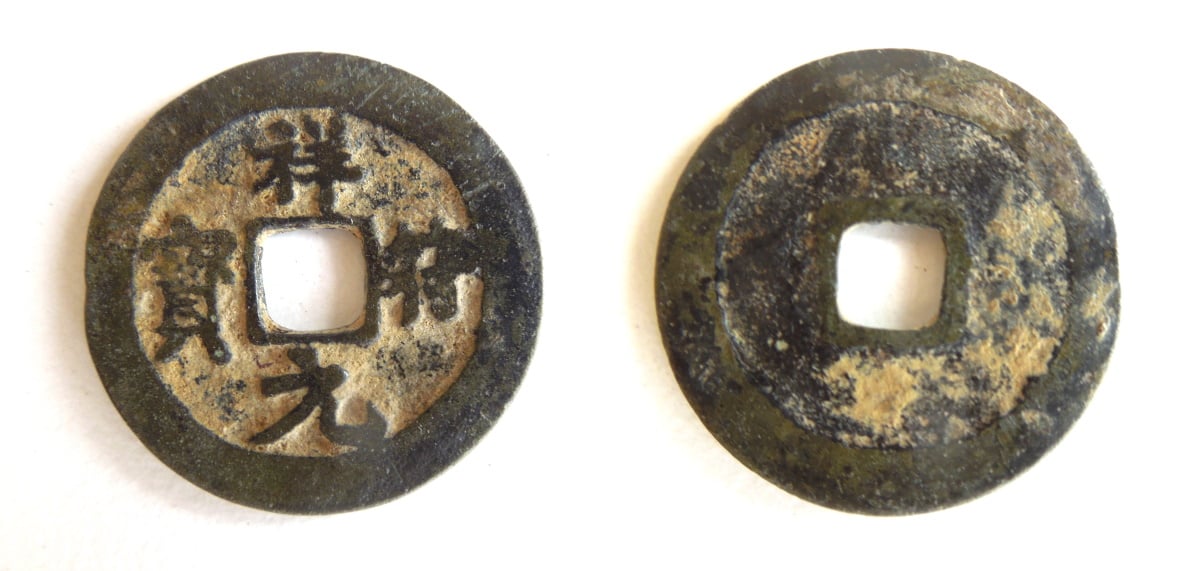
A newly discovered medieval Chinese coin, the second ever found in England, points to the possible existence of a vast medieval trade route spanning much of the Eastern hemisphere.
Discovered via a metal detector in a field in Hampshire, the copper-alloy coin dates to the Northern Song dynasty, between 1008 and and 1016, and would have likely circulated through the 14th century, according to the Times.
The find follows the discovery of a similar coin, dated from 1068 and 1077, in Cheshire in 2018.
“If they did arrive at some point in the medieval period, then they would help illustrate the existence of very long-distance, indirect trading networks and contacts in this era,” Cambridge historian and archaeologist Caitlin Green, who wrote a blog post about the find, told Artnet News in an email.
When the Chinese coin first turned up, researchers at the British Museum wrote that “it is doubtful that this is a genuine medieval find (i.e. present in the country due to trade and lost accidentally) but more likely a more recent loss from a curated collection.”
The distribution of archaeological and textual evidence for the presence of medieval Chinese pottery (black open circles) and coins (blue dots) west of India, set against the maximum extent of the Mongol Empire in the late thirteenth century in red; the map is based on Whitehouse 1972, Cribb and Potts 1996, Vigano 2011, Vigano 2014, Zhao 2015, Meicun and Zhang 2017, Василев 2017. Image by Caitlin Green.
But now that there’s been a second discovery of a similar nature, Green believes that conclusion has been called into question, and that the case for medieval trade links between China and the UK has become much more convincing—especially since both coins turned up in areas where medieval and early post-medieval material has previously been discovered.
“We have only a handful of finds of material from East Asia from pre-modern England,” Green said. “But interestingly, one of the other pieces is a piece of imported Chinese pottery from a 14th-century excavated context at Winchester, which is only 20 miles from the new coin find.”
A Northern Song dynasty coin from China, minted during the Xining reign between 1068 and 1077, found in Cheshire. Photo courtesy of the Portable Antiquities Scheme.
And Green has found other evidence of exchange between the two distant lands. There are historical accounts of Englishmen in the Mongol empire in the 13th century, and of Mongol envoys visiting England in 1264. Antique Chinese artifacts have also been found in other parts of Europe, Africa, and the Middle East.
Nevertheless, Green cautioned that these discoveries may have made their way to the UK in more recent times, especially since these were “metal-detected finds and not excavated from sealed archaeological contexts.”
“If there’s no other context, I’d suggest it’s just a random coin-find,” Helen Wang, who identified the coin for the UK’s Portable Antiquities Scheme, told the organization. “Chinese coins were taken on ships from China to [southeast] Asia, South Asia, the Middle East, so this coin could have come that way (at any date after 1008) or fallen out of a pocket not so long ago.”